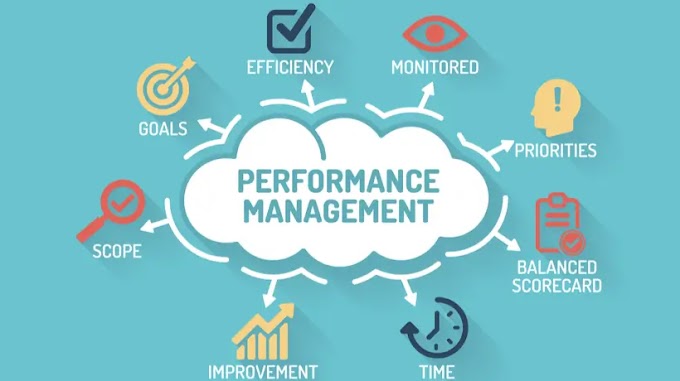Social-emotional learning (SEL) is a process that allows individuals to develop and apply the knowledge, attitudes, and skills necessary to understand and manage emotions, set and achieve positive goals, feel and show empathy for others, establish and maintain positive relationships, and make responsible decisions. It is an essential part of modern education that prioritizes the whole-child approach, recognizing that students' social and emotional development is just as important as their academic progress.
SEL is a critical component of education because it helps students develop the skills and competencies they need to succeed in school, work, and life. It has become increasingly important in recent years as schools have recognized the need to support students' mental health and well-being. SEL can help students feel more connected to school, reduce stress and anxiety, and improve their overall academic performance.
In the past, education has focused primarily on academic skills such as reading, writing, and mathematics. However, research has shown that social-emotional skills are just as important for success in life. For instance, students who are emotionally intelligent and have strong social skills are more likely to be successful in the workplace and have better long-term outcomes.
What is Social-Emotional Learning (SEL)
Social-emotional learning (SEL) is a process that involves developing the social and emotional skills and competencies necessary to navigate life successfully. SEL aims to support students' overall well-being by promoting positive relationships, emotional intelligence, self-awareness, and responsible decision-making.
According to the Collaborative for Academic, Social, and Emotional Learning (CASEL), there are five key elements of social-emotional learning:
- Self-awareness: The ability to recognize and understand one's emotions, thoughts, and values. Self-awareness enables individuals to accurately assess their strengths and limitations and cultivate a positive self-image.
- Self-management: The ability to regulate one's emotions, thoughts, and behaviors effectively. Self-management skills include impulse control, stress management, goal-setting, and the ability to persevere in the face of challenges.
- Social awareness: The ability to understand and empathize with others' emotions, thoughts, and perspectives. Social awareness skills involve recognizing and appreciating diversity, understanding social norms, and demonstrating empathy and compassion.
- Relationship skills: The ability to establish and maintain healthy relationships with others. Relationship skills include effective communication, active listening, conflict resolution, and the ability to work collaboratively.
- Responsible decision-making: The ability to make constructive and ethical decisions based on critical thinking, problem-solving, and reflection. Responsible decision-making skills involve understanding and applying ethical standards, considering the consequences of one's actions, and taking responsibility for one's choices.
By developing these five key elements of SEL, students can become better equipped to navigate life's challenges, build positive relationships, and succeed academically and personally. SEL programs have been shown to have a positive impact on students' academic performance, mental health, and social skills.
Benefits of Social-Emotional Learning
Social-emotional learning (SEL) has numerous benefits for students, including improved academic performance, enhanced emotional intelligence and self-awareness, improved relationships and social skills, and better mental health and well-being.
1. Improved Academic Performance
SEL programs can have a positive impact on students' academic performance by teaching them skills such as self-management, self-motivation, and self-regulation. These skills help students stay focused on their goals and achieve better academic outcomes. For example, a student who has strong self-management skills is more likely to prioritize their school work and stay on task, even when faced with distractions. SEL also helps students develop a growth mindset, which is the belief that their abilities and intelligence can be developed through hard work and perseverance. By promoting a growth mindset, SEL programs encourage students to embrace challenges, learn from mistakes, and persist in the face of setbacks. This can lead to improved academic outcomes, as students are more likely to take risks and persist in the face of challenges.
2. Enhanced Emotional Intelligence and Self-Awareness
SEL programs help students develop emotional intelligence, which is the ability to identify, understand, and manage one's own emotions, as well as the emotions of others. Emotional intelligence is critical for success in all areas of life, including personal relationships, the workplace, and academics. Students who are emotionally intelligent are better able to communicate effectively, resolve conflicts, and form positive relationships. SEL also helps students develop self-awareness, which is the ability to recognize and understand one's own thoughts, feelings, and behaviors. Self-awareness is a key component of self-regulation, which is the ability to manage one's own behavior and emotions in a variety of situations. For example, a student who is self-aware is better able to recognize when they are feeling anxious or stressed and take steps to manage those emotions in a healthy way.
3. Improved Relationships and Social Skills
SEL programs teach students how to interact positively with others, which can lead to improved relationships and social skills. These programs teach students how to communicate effectively, listen actively, and show empathy towards others. They also teach students how to resolve conflicts in a constructive manner and how to work collaboratively with others. By developing these social skills, students are better equipped to form positive relationships with their peers, teachers, and parents. This can lead to improved social support, a sense of belonging, and a more positive school climate.
4. Better Mental Health and Well-being
SEL programs can have a positive impact on students' mental health and well-being. These programs teach students how to manage their emotions effectively, develop positive coping mechanisms, and build resilience in the face of adversity. SEL also helps students develop a sense of purpose and meaning in their lives, which can lead to improved mental health outcomes. Students who participate in SEL programs are less likely to experience symptoms of depression, anxiety, and stress. Additionally, SEL can provide students with a sense of belonging and connectedness to their school community, which can promote positive mental health outcomes.
5. Improved Decision-Making
Social-emotional learning can help students develop critical thinking skills, which can improve their decision-making abilities. SEL programs teach students to analyze situations, consider alternatives, and weigh the consequences of their actions. By learning to make responsible decisions based on ethical considerations, students can avoid impulsive or harmful actions that might negatively affect their lives or the lives of others. Additionally, SEL programs can help students identify biases and assumptions in their thinking, which can lead to more informed and reasoned decisions.
6. Positive Behavior
Social-emotional learning can promote positive behavior in students by teaching them social skills, emotional intelligence, and responsible decision-making. SEL programs teach students to communicate effectively, manage their emotions, and form positive relationships with others. By learning these skills, students are less likely to engage in risky behaviors such as substance abuse, bullying, and violence. Instead, they are more likely to develop positive habits such as self-reflection, empathy, and self-care.
7. Higher Levels of Resilience
Social-emotional learning can help students develop resilience, which is the ability to bounce back from adversity. SEL programs teach students coping skills, problem-solving strategies, and a growth mindset, all of which can help them develop the resilience they need to face challenges and overcome obstacles. By developing resilience, students are better equipped to manage stress, maintain their mental health, and pursue their goals even in the face of setbacks.
8. Improved School Climate
Social-emotional learning can promote a positive school climate by fostering a sense of belonging and connectedness among students, teachers, and staff. When students feel valued and supported, they are more likely to engage in positive behaviors, such as showing respect for others and taking responsibility for their actions. Additionally, when teachers and staff are trained in SEL, they are better equipped to provide a supportive and safe learning environment for their students. This can lead to reduced incidents of bullying, conflict, and discipline problems, and can create a more positive and productive school environment overall.
Social-emotional learning programs offer a wide range of benefits for students, teachers, and schools. By focusing on the development of social and emotional competencies, educators can help students succeed both academically and in life. Through improved decision-making, positive behavior, resilience, and school climate, students can develop the skills and confidence they need to navigate the challenges of school and beyond.
How to Implement Social-Emotional Learning in Education
Implementing social-emotional learning in education requires a concerted effort from school administrators, teachers, and staff. Some ways to implement SEL include:
1. Creating a Safe and Supportive Learning Environment
The first step in implementing social-emotional learning in education is to create a safe and supportive learning environment. This involves creating a school culture that values social and emotional development, where students feel safe, respected, and supported. Schools can achieve this by implementing policies and procedures that promote positive behavior, such as anti-bullying programs, conflict resolution strategies, and restorative justice practices. Schools can also provide resources for students who may be struggling with mental health or other issues, such as counseling services or support groups.
2. Incorporating SEL into the Curriculum
The next step in implementing social-emotional learning is to incorporate it into the curriculum. This can involve integrating SEL lessons into existing subjects, or creating standalone courses or activities focused on social and emotional competencies. SEL lessons can cover a range of topics, from self-awareness and empathy to communication and conflict resolution. Teachers can use a variety of teaching methods, such as role-playing, group discussions, and cooperative learning, to engage students and promote active learning.
3. Providing Professional Development for Teachers and Staff
Another important aspect of implementing social-emotional learning in education is providing professional development for teachers and staff. This can involve training sessions, workshops, or ongoing coaching to help educators understand and implement SEL practices. Professional development can help teachers learn how to create a safe and supportive learning environment, how to incorporate SEL into the curriculum, and how to use effective teaching methods to promote social and emotional development. Additionally, providing professional development can help build buy-in and support for SEL programs among educators and staff.
4. Supporting Family and Community Engagement
Finally, implementing social-emotional learning in education requires support from families and the broader community. Schools can engage families and communities by communicating the importance of SEL, providing resources and training for parents and caregivers, and involving community partners in SEL programs. By working together, schools, families, and communities can create a comprehensive system of support for students' social and emotional development.
Implementing social-emotional learning in education requires a comprehensive and collaborative approach. By creating a safe and supportive learning environment, incorporating SEL into the curriculum, providing professional development for teachers and staff, and supporting family and community engagement, schools can help students develop the social and emotional competencies they need to succeed in school and in life.
Challenges to Implementing Social-Emotional Learning
Despite the numerous benefits of social-emotional learning, there are still challenges that schools face in implementing it. Some of these challenges include:
Lack of Resources and Funding
One of the primary challenges to implementing social-emotional learning is a lack of resources and funding. Implementing SEL programs can require investments in curriculum development, professional development, and specialized staff. Unfortunately, many schools face budget constraints and may struggle to find the resources to implement SEL programs effectively. To address this challenge, schools can explore creative funding strategies, such as grants, partnerships with community organizations, and fundraising efforts.
Resistance to Change and Unfamiliarity with SEL
Another challenge to implementing social-emotional learning is resistance to change and unfamiliarity with SEL. Some educators and staff may be skeptical of the value of SEL, or may be resistant to changing their teaching methods or classroom practices. Additionally, parents and community members may not be familiar with SEL and may not understand its importance. To address this challenge, schools can provide education and training to help stakeholders understand the benefits of SEL and how it can be integrated into existing programs.
The Need for Trained and Knowledgeable Teachers
Implementing social-emotional learning effectively also requires having trained and knowledgeable teachers. However, many teachers may not have the skills or training necessary to effectively implement SEL programs. To address this challenge, schools can provide professional development opportunities for teachers, offer ongoing coaching and support, and partner with organizations or individuals with expertise in SEL.
Measuring and Assessing Progress
Finally, measuring and assessing progress can be a challenge in implementing social-emotional learning. Unlike academic skills, social and emotional competencies can be difficult to measure and evaluate. Schools may struggle to identify appropriate metrics and assessment tools to track progress and demonstrate the effectiveness of SEL programs. To address this challenge, schools can work with experts in SEL assessment and evaluation, use a variety of assessment tools, and collect data from multiple sources, such as student surveys, teacher observations, and academic performance data.
Overall, while there are challenges to implementing social-emotional learning in education, schools can take steps to address these challenges and create a supportive environment for student social and emotional development. By recognizing and addressing these challenges, schools can work towards implementing effective SEL programs that benefit students and help them succeed in school and in life.
👉 Read more posts with the same topic
Conclusion
In conclusion, social-emotional learning is an essential aspect of modern education that supports students' social and emotional development and helps them succeed in school and beyond. By improving academic performance, enhancing emotional intelligence and self-awareness, and promoting positive relationships and social skills, social-emotional learning can have a significant impact on students' mental health and well-being.
To effectively implement social-emotional learning in education, schools must create a safe and supportive learning environment, incorporate SEL into the curriculum, and provide professional development opportunities for teachers and staff. However, there are also challenges to implementing SEL, such as a lack of resources and funding, resistance to change and unfamiliarity with SEL, and the need for trained and knowledgeable teachers.
Despite these challenges, schools can take steps to address them and prioritize SEL in their education programs. By recognizing the importance of social-emotional learning and working to overcome the challenges to its implementation, schools can create a learning environment that supports the whole student, fosters positive relationships, and promotes mental health and well-being.
In summary, it is crucial for schools and educators to prioritize social-emotional learning to help students develop the skills and competencies they need to succeed in school and in life. By doing so, we can create a brighter future for our children and communities.


.jpg)






0 Comments